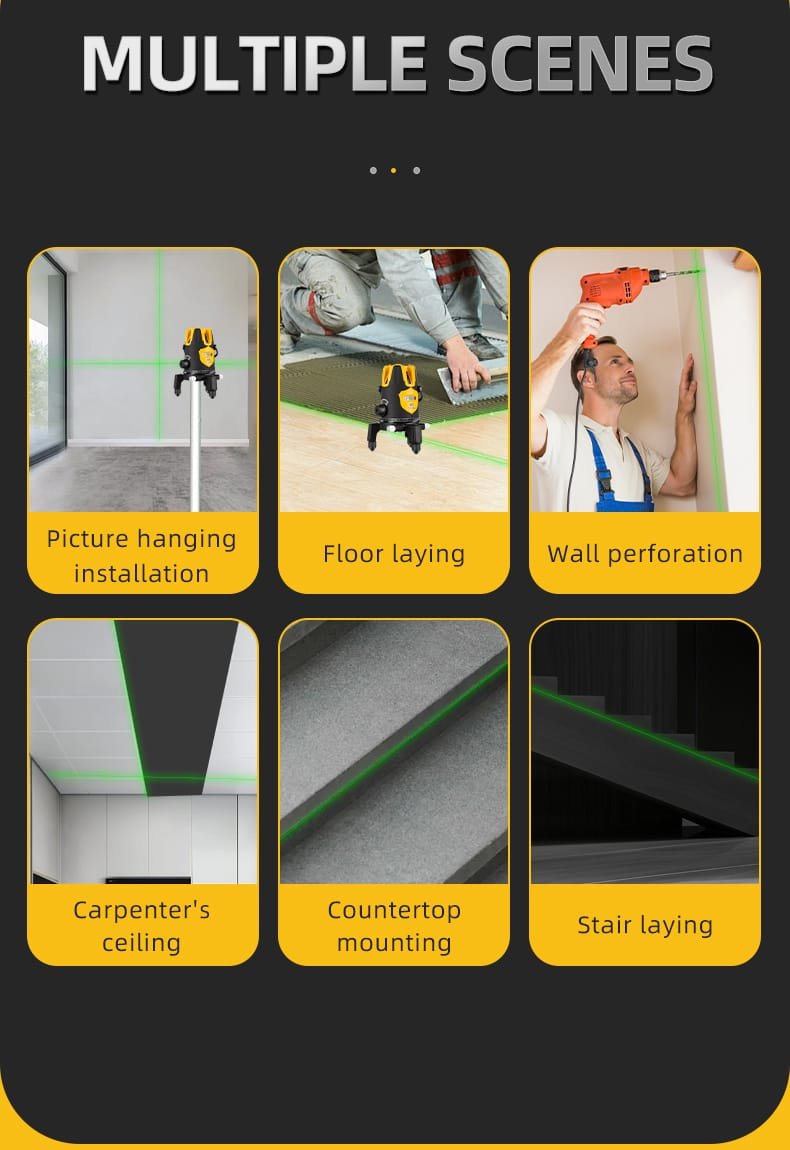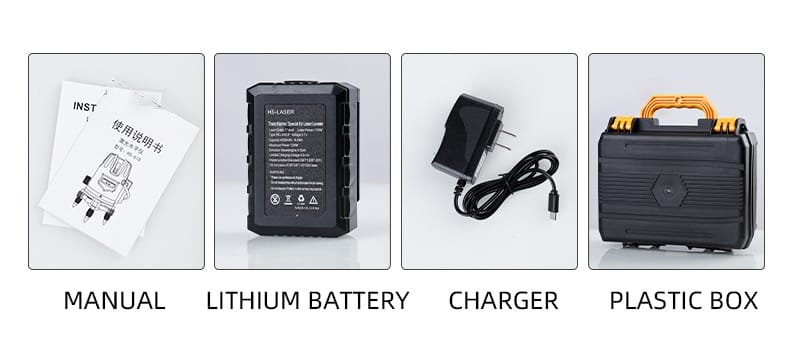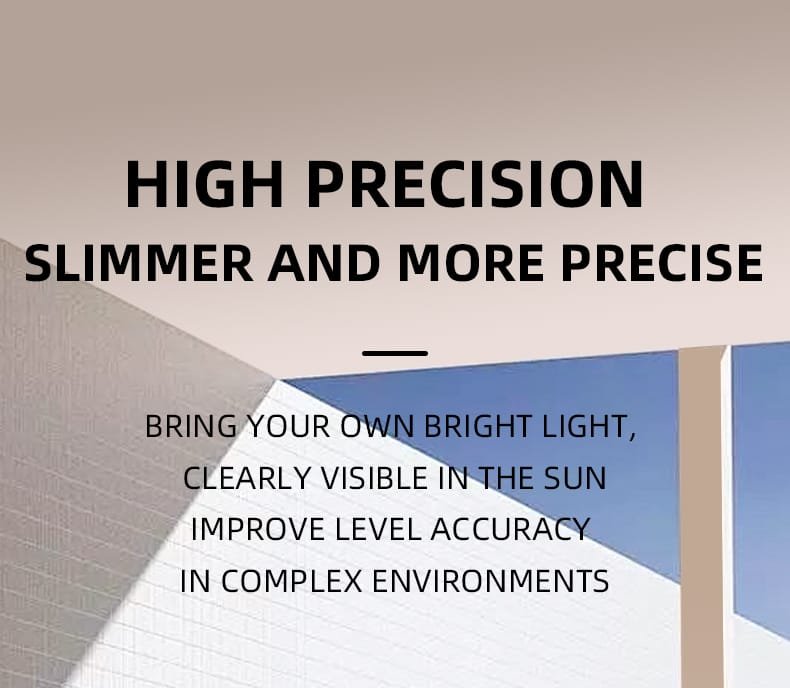Content Menu
● Understanding Laser Level Meter Rangefinders
● Types of Laser Level Meter Rangefinders
● Key Features of Laser Level Meter Rangefinders
● Applications of Laser Level Meter Rangefinders
● Benefits of Using Laser Level Meter Rangefinders
● Choosing the Right Laser Level Meter Manufacturer
● How to Use a Laser Level Meter Rangefinder Effectively
● Common Issues with Laser Level Meter Rangefinders
● Innovations in Laser Level Technology
● Frequently Asked Questions (FAQs)
Laser level meter rangefinders are critical tools in various industries, particularly in construction and surveying, where precision is paramount. As a leading manufacturer of high-quality hand tools, Nxtools is well-positioned to explore the significance of these devices, their applications, and how they enhance accuracy in measurement tasks. This article will delve into the features, benefits, and considerations when selecting laser level meter rangefinders.

![]() Understanding Laser Level Meter Rangefinders
Understanding Laser Level Meter Rangefinders
Laser level meter rangefinders utilize laser technology to measure distances with exceptional accuracy. They project a laser beam onto a target, and the device calculates the distance based on the time it takes for the beam to return. This technology has revolutionized measurement techniques across various sectors.
The basic principle behind laser rangefinders is based on the speed of light. When the laser beam hits an object, it reflects back to the device. The rangefinder measures the time taken for this round trip and uses it to calculate the distance using the formula:

This method allows for precise measurements that can be crucial in tasks requiring high accuracy.
![]() Types of Laser Level Meter Rangefinders
Types of Laser Level Meter Rangefinders
There are several types of laser level meter rangefinders available, each suited for specific applications:
- Rotary Laser Levels: These devices project a rotating laser beam around a 360-degree plane. They are ideal for large outdoor projects such as grading and leveling land.
- Line Laser Levels: These emit a straight line of laser light, perfect for smaller indoor tasks like hanging pictures or installing shelves.
- Dot Laser Levels: These project dots at specific intervals and are commonly used for establishing plumb lines.
- 3D Laser Levels: These advanced models project multiple lines in three dimensions, allowing for complex layout tasks in construction and design.

![]() Key Features of Laser Level Meter Rangefinders
Key Features of Laser Level Meter Rangefinders
When selecting a laser level meter rangefinder, consider the following features:
- Accuracy: Most laser levels provide an accuracy of ±1/8 inch over 100 feet, making them reliable for precision tasks.
- Self-Leveling Capability: Self-leveling models automatically adjust to ensure the laser line is perfectly horizontal or vertical.
- Range: Depending on the model, some laser levels can measure distances up to several hundred feet. For example, high-end models can measure distances up to 1,000 feet or more.
- Durability: Many models are designed to withstand harsh conditions, making them suitable for outdoor use. Look for features like IP ratings that indicate water and dust resistance.
- Battery Life: A long battery life is essential for extended projects. Some models offer rechargeable batteries or energy-saving modes.
- Display Features: Clear LCD displays that show measurements in real-time can enhance usability. Some advanced models also offer backlit displays for visibility in low-light conditions.

![]() Applications of Laser Level Meter Rangefinders
Applications of Laser Level Meter Rangefinders
Laser level meter rangefinders find applications in various fields:
- Construction: Used for leveling foundations, framing walls, and installing ceilings. They help ensure that structures are built to precise specifications.
- Surveying: Essential for land surveying and establishing property boundaries. Surveyors use these devices to create accurate maps and assess land features.
- Interior Design: Useful for hanging artwork or aligning fixtures accurately. Designers rely on laser levels to ensure that installations are visually appealing and correctly positioned.
- Electrical Work: Electricians use laser levels to install outlets and fixtures at consistent heights across different rooms.
- Landscaping: In landscaping projects, these tools help ensure that slopes and levels are correct for drainage and aesthetic purposes.
![]() Benefits of Using Laser Level Meter Rangefinders
Benefits of Using Laser Level Meter Rangefinders
The advantages of using laser level meter rangefinders include:
- Speed: They allow for quick measurements compared to traditional methods. This efficiency can significantly reduce project timelines.
- Ease of Use: Most models are user-friendly, making them accessible even to beginners. Many come with intuitive controls that require minimal training.
- Versatility: Suitable for both indoor and outdoor applications across different industries. Their adaptability makes them valuable tools in various settings.
- Enhanced Visibility: Many modern laser levels come with bright lasers that can be seen even in daylight conditions, improving usability outdoors.
![]() Choosing the Right Laser Level Meter Manufacturer
Choosing the Right Laser Level Meter Manufacturer
When selecting a manufacturer for laser level meter rangefinders, consider factors such as:
- Reputation: Look for manufacturers known for quality and reliability in their products. Brands with positive reviews often indicate good customer satisfaction.
- Product Range: A diverse product line indicates expertise and innovation in the field. Manufacturers like Nxtools offer various models tailored to different needs.
- Customer Support: Good after-sales support can be crucial for troubleshooting and maintenance. Ensure that the manufacturer provides adequate warranty coverage and customer service options.
Nxtools stands out as a reputable manufacturer specializing in high-quality hand tools, including laser level meter rangefinders. Their commitment to quality ensures that customers receive durable and accurate tools tailored to their needs.

![]() How to Use a Laser Level Meter Rangefinder Effectively
How to Use a Laser Level Meter Rangefinder Effectively
Using a laser level meter rangefinder involves several steps:
1. Set Up the Device: Place the device on a stable surface or tripod to ensure it remains steady during operation.
2. Turn On the Device: Activate the laser level and allow it to self-level if applicable; this process usually takes only a few seconds.
3. Align with Target: Aim the laser at your target area or object to take measurements accurately.
4. Read Measurements: Observe the display for accurate distance readings; many devices will show real-time updates as you move closer or further from your target.
5. Make Adjustments as Needed: Use the measurements obtained to make necessary adjustments in your project; this could involve repositioning materials or adjusting layouts based on your findings.
![]() Common Issues with Laser Level Meter Rangefinders
Common Issues with Laser Level Meter Rangefinders
Despite their advantages, users may encounter some common issues:
- Battery Life: Ensure that batteries are charged or replaced regularly to avoid interruptions during use; some advanced models come with rechargeable options that can save costs over time.
- Visibility in Bright Conditions: Some lasers may be difficult to see in direct sunlight; using a detector can help in such scenarios where visibility is compromised.
- Calibration Needs: Regular calibration may be necessary to maintain accuracy over time; most devices have built-in calibration features that simplify this process.
- Environmental Factors: Extreme temperatures or wet conditions may affect performance; always check manufacturer guidelines regarding operational limits.
![]() Innovations in Laser Level Technology
Innovations in Laser Level Technology
With advancements in technology, newer models of laser level meter rangefinders feature innovative enhancements:
- Bluetooth Connectivity: Some modern devices offer Bluetooth connectivity that allows users to connect their smartphones or tablets for enhanced functionality such as data logging and remote control capabilities via dedicated apps.
- Digital Displays with Memory Functions: Advanced models now include digital displays that not only show measurements but also store multiple readings for later reference—ideal for complex projects requiring numerous measurements over time.
- Integrated Sensors: Newer models may feature integrated sensors that provide additional data such as temperature or humidity readings which can influence measurement accuracy in certain conditions.
![]() Conclusion
Conclusion
Laser level meter rangefinders are indispensable tools that enhance accuracy and efficiency in measurement tasks across various industries. As a leading manufacturer, Nxtools offers high-quality options that cater to diverse needs. By understanding their features, applications, benefits, and innovations, users can make informed decisions when selecting these essential tools.
![]() Frequently Asked Questions (FAQs)
Frequently Asked Questions (FAQs)
1. What is the difference between rotary and line laser levels?
- Rotary levels project a rotating beam around a 360-degree plane suitable for large areas, while line levels emit straight lines ideal for smaller tasks like aligning fixtures indoors.
2. Can I use a laser level outdoors?
- Yes, many models are designed for outdoor use; however, ensure they have sufficient visibility features like pulse mode or detectors to enhance visibility under bright conditions.
3. How do I maintain my laser level meter rangefinder?
- Regularly check battery levels, clean lenses with appropriate materials (like microfiber cloths), and calibrate as needed according to manufacturer recommendations to ensure optimal performance over its lifespan.
4. What should I consider when buying a laser level?
- Consider factors such as accuracy ratings (look for ±1/8 inch over 100 feet), maximum measuring distance capabilities (some go beyond 1,000 feet), durability features (like IP ratings), self-leveling capabilities if needed based on your projects’ requirements.
5. Are there safety precautions I should take when using laser levels?
- Avoid looking directly into the laser beam as it can cause eye damage; do not point it at people or reflective surfaces which could redirect beams unexpectedly causing accidents; always follow safety guidelines provided by manufacturers during operation procedures.

